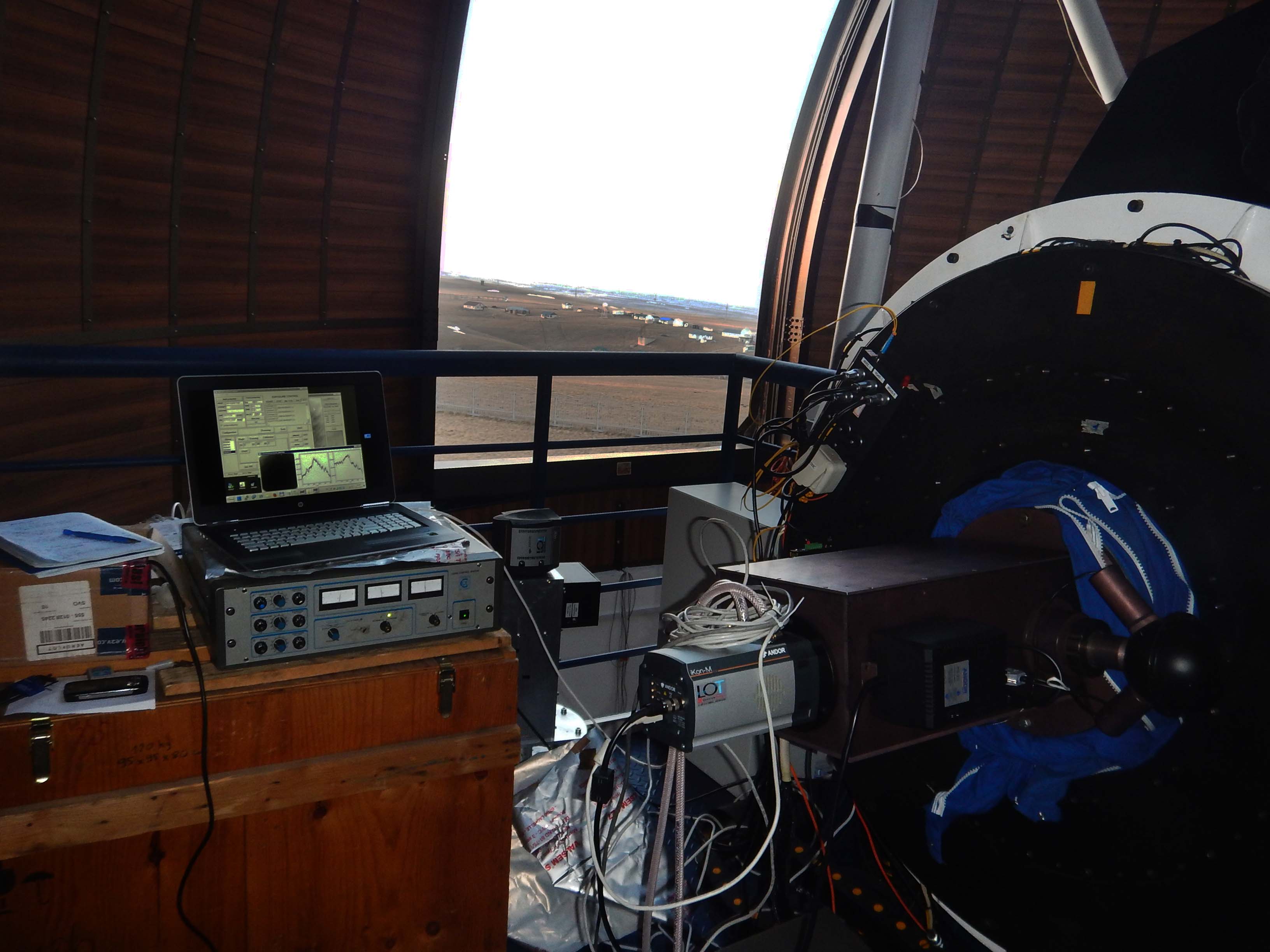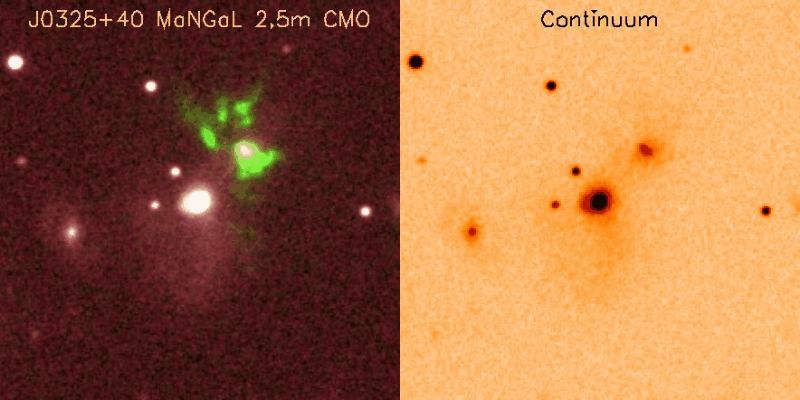MaNGaL
Mapper of Narrow Galaxy Lines

MaNGaL news
2024 Sep New paper: "Parameters of Star Formation Regions in Galaxies NGC 3963 and NGC 7292"
2023 Jan New papers: 3D structure of HII regions in the star-forming complex S254-S258", "Enigmatic Emission Structure around Mrk 783: Cross-Ionization of a Companion 100 kpc Away", and more new MaNGaL papers
2022 Jan. The TELPERION survey for distant [O III] clouds around luminous and hibernating AGN
2021 Dec. Observations of Galactic HII regions in the frameworks of the Russian Science Foundation project 21-12-00373 "The effects of ultraviolet radiation on gas and dust in star-forming regions" have been started at the 1-m "Zeiss-1000" telescope: see The Gallery

2021 Jan. The Gallery was updated.
2020 Nov. The result from 2.5-m telescope: tunable filter revealed an extended ionizing cone around active nucleus in the merging galaxies.

The Mapper of Narrow Galaxy Lines (MaNGaL [1]) was developed and manufactured in the SAO RAS for the 1-m telescope of the SAO RAS and the 2.5-m telescope of the Sternberg Astronomical Institute of the Moscow State University.
The instrument is mounted on the scanning Fabry-Perot interferometer operating in the tunable-filter mode in the spectral range of 460-800 nm with a typical spectral resolution of about 1.5 nm. It allows one to create images of galactic and extragalactic nebulae in the different emission lines (see the paper about NGC 3077).
The most effective usage of MaNGaL consists in observation in a couple of neighbouring emission lines with different mechanism of excitation having a common point for the continuum (Hα+[NII]), e.g.). It also can be used to create diagnostic diagrams based on several line ratios, like [OIII]/Hβ vs. [SII]/Hα.
The authoritative technical specifications as offered for astronomical observations are available from the Science Operation page.
Contacts
Alexei V. Moiseev, Sc.D, Leading Researcher
E-mail: [email protected], [email protected]
Notes
[1] ‘Mangal’ is a Caucassian and Middle-East barbeque.
This study was supported by the Russian Science Foundation, project no. 17-12-01335 ‘Ionized gas in galaxy discs and beyond the optical radius’.
The last update: 25 Feb 2025 by A. Moiseev
MaNGaL

Photos of the device: 
Papers based on the MaNGaL data: 
|

